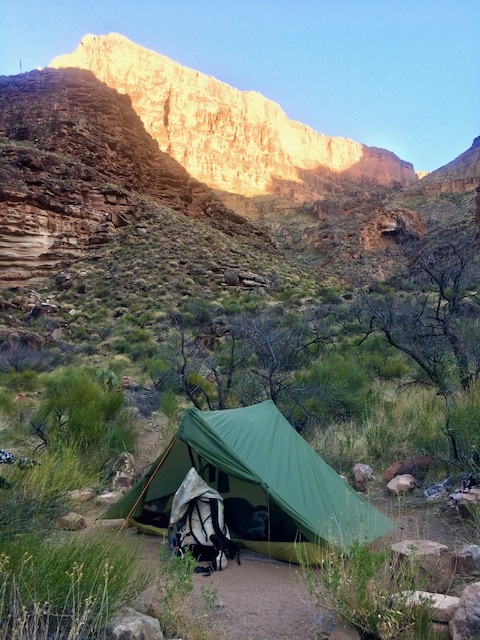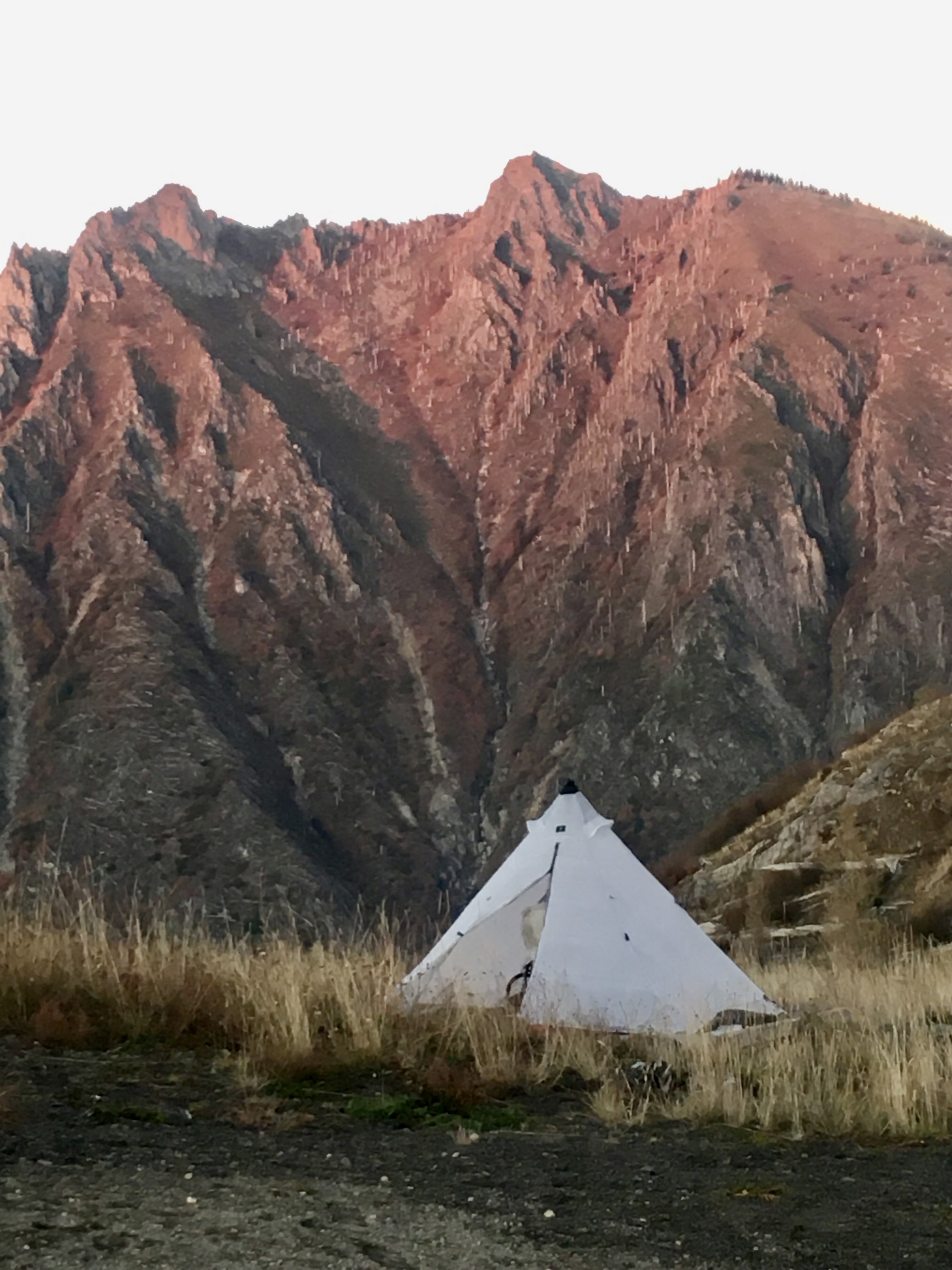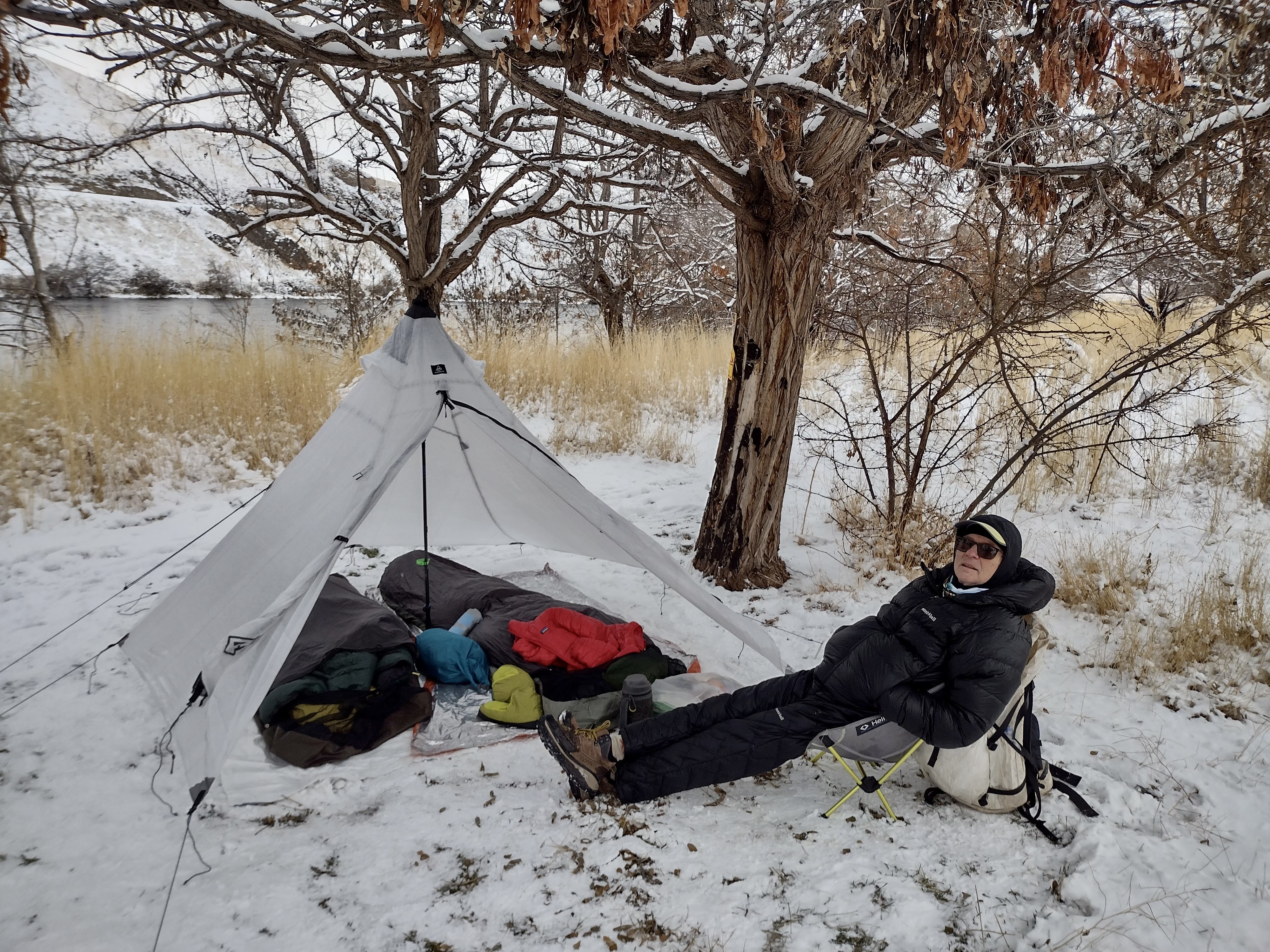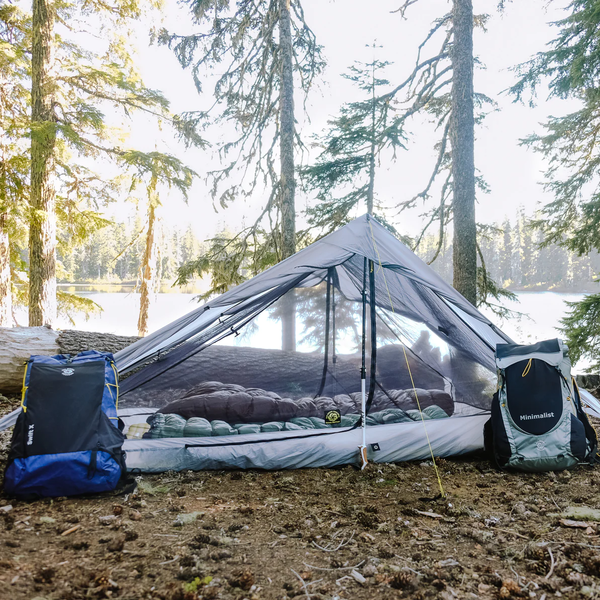Lighter shelters have one main advantage: they are lighter. That may sound like a no brainer, but you need to be prepared to make sacrifices in some ways to get that tent to be lighter. The lightest tents we sell are non-freestanding, single wall, and are designed to use trekking poles to set them up. All of those come with drawbacks, but they are drawbacks that a majority of our customers are willing to accept to get a lighter shelter. So, let’s dig deeper into what those drawbacks are.

Free standing vs non free-standing. Typically, free standing tents will stand on their own without stakes. BUT, almost all tents still need to be staked out. It’s just that the stakes aren’t integral to the tent standing up, and will have less forces applied to them. Free standing tents are good if you expect to set up your tent on rock slabs, or may expect a lot of foul weather. Free standing tents are often structurally stronger to withstand snow or wind loading. Non free-standing tents are often lighter and take more care setting up the tent to make sure the stakes are well placed in the ground so the tent remains standing throughout the night.
Single wall vs double wall. Double wall tents are the most common tents on the market. Double wall tents have a main tent body and has a separate fly that goes over it to protect from rain. Single wall tents combine those two separate pieces to one single piece of waterproof material. The biggest disadvantage of single wall tents is moisture. When you are inside your tent at night, you are breathing out moist air, and you are creating a temperature differential as opposed to outside, and both of those can contribute to condensation on the inside of your tent. This can be mitigated by ventilation and good tent site selection, but invariably, you’ll still have some condensation. In my experience, in the summer in the PNW, my tent is dry by the time I’ve had breakfast and I’m ready to take down the tent. Occasionally, I’ve moved the tent so the morning sun can dry it out fast. The other moisture drawback is rain. While all tents are waterproof, having a double wall tent allows you to keep the wet fly and dry inner tent separated. Double wall tents also give you the ability to share the load with your camping partner if you’re sharing a tent. So, if backpacking in the rain appeals to you, a double wall tent might be the right choice.

Most ultralight tents and designed to set up with trekking poles. That’s a big weight savings if you are taking trekking poles with you anyway. Trekking pole tents are almost always non free-standing, so all those advantages and disadvantages apply. The disadvantage of trekking pole tents would be if you base camp, and take day hikes from there and want to take your trekking poles with you. Trekking pole tents often have less usable head room due to the poles creating a single peak, or a single ridge for the peak height. Most trekking pole tents have the option of buying tent poles separately if you don’t use trekking poles, or want to take them with you.
The good news is that we can set up any tent you want to take a look at. There is nothing like getting to climb inside of a tent to get a good idea if it’s the right tent for you. We also rent a couple different styles of tents if you’d like to get a chance to try them out first. For double wall free standing we have the Big Agnes Blacktail tents. For non free-standing, single wall trekking pole style, we have the Six Moon Designs Lunar Duo Outfitter.

My picks for different styles of 2 person summer backpacking tents (available for purchase at Mountain Shop):
--Ultralight: Gossamer Gear The Two
--Double wall, yet still ultralight: Six Moon Designs Haven Bundle
--Freestanding double wall: Big Agnes Copper Spur

